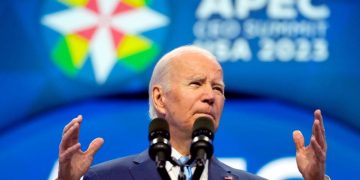Introduction
The economies of Europe and the United States are two of the largest and most influential in the world, each playing a crucial role in shaping global financial markets and economic trends. While these regions operate under distinct economic conditions and policy frameworks, their market dynamics are deeply interconnected, with each influencing the other and collectively impacting the broader global economy. As global markets become more integrated, the relationship between Europe and the U.S. has grown increasingly important for understanding global economic trajectories, investment flows, and geopolitical developments.
In this article, we will explore how market dynamics in Europe and the United States jointly drive global economic trends. We will examine key factors such as monetary policy, trade relations, financial markets, and economic growth patterns, shedding light on how the policies and performance of these two regions can shape the direction of the global economy. By understanding the interplay between Europe and the U.S., investors, policymakers, and businesses can better navigate the complexities of the global market environment.
Section 1: The Interconnectedness of the U.S. and European Economies
The U.S. and Europe are not isolated entities but are instead intricately linked through trade, investment, financial markets, and geopolitical relations. Their economic activities and market dynamics can have a far-reaching impact on one another, with both regions driving trends that reverberate across the globe.
1.1 Trade and Investment Flows
The United States and the European Union (EU) are two of the largest trading partners in the world. They engage in extensive trade in goods and services, with both regions exporting and importing a wide variety of products. In addition to trade, cross-border investment between the U.S. and Europe is significant, with European companies investing heavily in the U.S. economy and vice versa. This interconnectedness in trade and investment helps to create a feedback loop where market performance in one region can directly impact the other.
- Trade Relations: Trade between the U.S. and Europe supports economic growth, job creation, and supply chains across both regions. A slowdown in the U.S. economy, for example, can lead to reduced demand for European exports, while a downturn in the European economy can have similar effects on U.S. exports.
- Investment: Transatlantic investments are critical for both regions, as U.S. companies benefit from access to the European market, and European companies rely on the U.S. for growth opportunities. A shift in investment sentiment in one region can affect asset prices and market dynamics in the other.
1.2 Financial Market Interdependence
The U.S. and European financial markets are deeply interconnected, with major stock exchanges such as the New York Stock Exchange (NYSE) and the London Stock Exchange (LSE) being key global financial hubs. Global investors closely monitor market movements in both regions, as their performance has implications for global capital flows, risk sentiment, and investment strategies.
- Equity Markets: Movements in U.S. equity markets, such as the S&P 500, have a direct influence on European markets, particularly as large U.S. corporations with global operations impact market sentiment. Similarly, European indices like the Euro Stoxx 50 often reflect the performance of multinational companies whose fortunes are tied to global trends.
- Bond Markets: U.S. Treasury bonds and European government bonds, such as German Bunds, are often considered safe-haven assets for global investors. Changes in bond yields in either region can shift investor preferences between riskier and safer assets, affecting global capital flows.
1.3 Currency Fluctuations
The value of the U.S. dollar and the euro plays a key role in global financial markets. Both currencies are widely used in international trade and finance, with fluctuations in their value impacting everything from the cost of imports to investor returns on foreign investments.
- Dollar and Euro Dynamics: The value of the U.S. dollar often moves in tandem with economic conditions in the U.S., including interest rate changes by the Federal Reserve and economic growth indicators. Similarly, the euro is influenced by economic performance in the Eurozone, as well as decisions by the European Central Bank (ECB).
- Global Impact: As the U.S. dollar and the euro are the two most traded currencies in the world, their fluctuations can influence global commodity prices, capital flows, and inflation expectations. A stronger dollar can make commodities like oil and gold more expensive for foreign buyers, while a weaker euro can enhance European export competitiveness.
Section 2: How U.S. and European Monetary Policies Influence Global Economic Trends
Monetary policy decisions made by the U.S. Federal Reserve and the European Central Bank (ECB) have profound effects on the global economy. These policies, which include changes in interest rates and quantitative easing programs, can impact inflation, economic growth, and investor sentiment across the world.
2.1 U.S. Federal Reserve’s Monetary Policy
The U.S. Federal Reserve, as the central bank of the largest economy in the world, plays a critical role in setting global economic trends. The Fed’s monetary policy decisions influence interest rates, inflation, and global capital flows. In recent years, the Fed has adjusted its policies in response to inflationary pressures, economic growth concerns, and global economic events.
- Interest Rate Hikes and Economic Growth: When the Fed raises interest rates, borrowing costs increase, potentially slowing down consumer spending, business investment, and economic growth. However, rate hikes also attract foreign investment as higher rates offer better returns on U.S. assets, which can strengthen the dollar and impact global trade and investment flows.
- Quantitative Easing (QE) and Capital Flows: In periods of economic downturn or crisis, the Fed may engage in quantitative easing (QE), where it purchases financial assets like government bonds to inject liquidity into the financial system. This policy can boost global asset prices, increase liquidity, and stimulate investment in riskier assets globally.
2.2 European Central Bank’s Monetary Policy
The European Central Bank (ECB) influences the economic trajectory of the Eurozone and, by extension, the global economy. While the ECB has traditionally been more cautious in its policy adjustments than the U.S. Federal Reserve, its monetary decisions still play a significant role in global markets.
- Low Interest Rates and Stimulus: The ECB has maintained low interest rates for much of the past decade in response to slow economic growth and low inflation within the Eurozone. This has led to an influx of investment in riskier assets, both in Europe and globally, as investors search for higher returns in an environment of low yields.
- ECB Bond Purchases and Global Liquidity: The ECB’s bond-buying programs, similar to the Fed’s QE initiatives, have also contributed to the flow of global capital into European and other global markets. By keeping bond yields low, the ECB encourages borrowing and investment, boosting demand for both European assets and global assets.
2.3 Coordinated Monetary Policies and Global Spillovers
Although the U.S. and European central banks have often pursued independent monetary policies, their actions can have coordinated effects on the global economy. For instance, a period of dovish monetary policy in both regions may lead to an influx of liquidity into global markets, pushing up asset prices and encouraging risk-taking behavior.
- Global Liquidity and Asset Prices: When both the Fed and ECB maintain accommodative monetary policies, global liquidity increases, which can lead to rising asset prices across all asset classes, including equities, bonds, and real estate. This creates a favorable environment for global investors, as they seek to capitalize on the growing pool of capital.
- Currency Market Volatility: Divergent monetary policies between the U.S. and the Eurozone can cause volatility in currency markets, influencing global exchange rates and trade balances. For example, if the Fed raises rates while the ECB keeps rates low, the U.S. dollar may appreciate, making European exports less competitive and affecting global trade dynamics.

Section 3: Geopolitical and Economic Factors Shaping U.S. and European Market Dynamics
While monetary policy plays a crucial role in driving market trends, other geopolitical and economic factors also influence the market dynamics in both the U.S. and Europe, which in turn affect the global economy.
3.1 Global Trade and Protectionism
Trade relations between the U.S. and Europe, along with their policies toward global trade, can significantly impact the direction of the global economy. Trade wars, tariffs, and protectionist measures can disrupt global supply chains, raise costs for businesses, and dampen investor sentiment.
- U.S.-EU Trade Relations: Trade agreements and disputes between the U.S. and the EU have a direct impact on global trade flows. For example, trade tensions between the U.S. and Europe can lead to shifts in global supply chains, affecting commodity prices, manufacturing, and global growth.
- Protectionist Policies: Both regions have seen a rise in populist and protectionist sentiments in recent years, which could lead to further disruptions in global trade. These tensions may shift investment flows, affect global production, and increase uncertainty, ultimately impacting global economic growth.
3.2 European Economic Recovery and U.S. Growth
Economic growth patterns in both regions are critical drivers of global economic performance. A strong recovery in Europe can lift global demand for goods and services, while sustained growth in the U.S. can provide stability and investment opportunities for global markets.
- European Economic Recovery: As Europe recovers from the COVID-19 pandemic and other challenges, its growth can contribute positively to global trade and investment. Economic strength in Europe, supported by fiscal stimulus and the ECB’s monetary policies, can boost confidence in global markets and create opportunities for investors.
- U.S. Economic Performance: U.S. economic growth is a key driver of global economic trends. A healthy U.S. economy typically supports strong demand for global goods and services, bolstering the financial outlook for emerging markets and developed nations alike.
Conclusion
The economic and market dynamics in both the U.S. and Europe are crucial drivers of global trends, with their policies, trade relations, and financial systems influencing the broader economic landscape. As two of the most influential regions, the U.S. and Europe collectively shape global investment strategies, trade flows, and capital markets. By understanding the interconnections between these two economies, global investors can gain valuable insights into the forces that drive global economic performance and better position themselves in an increasingly interconnected world.


































